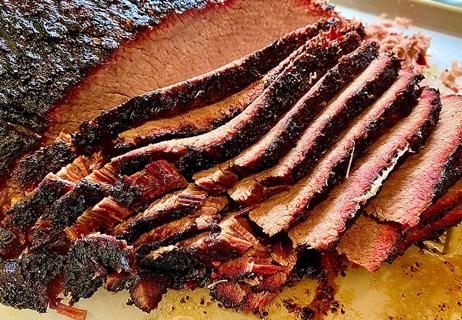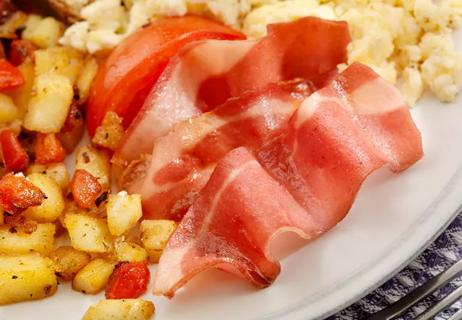Packed with iron, vitamin A and protein, beef liver provides a healthy low-calorie meat option

A cow’s liver — much like that of a human’s — needs a lot of vitamins and nutrients to help it work well. The liver is an organ that aids in the removal of harmful substances from the blood called toxins. It’s also a gland that makes important proteins and hormones.
Advertisement
Cleveland Clinic is a non-profit academic medical center. Advertising on our site helps support our mission. We do not endorse non-Cleveland Clinic products or services. Policy
As an organ meat, the low-calorie, high-nutrient content of liver qualifies it as a superfood. “In many ways, liver is better for you than traditional muscle meats like steak and burgers that most of us eat,” says registered dietitian Beth Czerwony, RD, LD. “It’s lower in calories and fat and has more vitamins and nutrients. Organ meat is also more affordable than red meat.”
There are many health benefits of including organ meats (also called offal or variety meats) into your diet.
With 4 milligrams of iron in a 3-ounce serving, beef liver is one of the best sources of iron. One serving provides half of the recommended daily amount of iron for men and one-fifth for women.
Iron is a key component in hemoglobin, the red blood cell proteins that help carry oxygenated blood throughout your body. It also aids muscle development. “A diet low in iron can lead to iron-deficiency anemia, which causes fatigue, heart arrhythmias and chest pain,” adds Czerwony.
A 3-ounce serving of beef liver provides 17 grams of protein, making it an excellent source of protein. This nutrient is important to a child’s growth. Adults need it, too, to build, repair and maintain tissues like muscle. It also helps with weight loss.
Advertisement
“High-protein foods keep you feeling full longer, so you’re less likely to overeat or reach for an unhealthy snack,” says Czerwony.
Bodybuilders and powerlifters have been eating beef liver and taking beef liver supplements since at least the 1930s when experts first touted the liver’s ability to promote muscle gains. Protein also supplies oxygen to red blood cells, giving you more energy when you work out.
You can meet your body’s daily needs for vitamin A by eating a 3-ounce serving of liver. One serving has more than 4,200 micrograms of retinol activity equivalents (mcg RAE) of vitamin A. This vitamin promotes good vision, boosts your immune system and may even lower your risk of cancer.
Organ meats like liver and foods like fish and eggs provide what’s known as preformed vitamin A (retinoids or retinol) that your body uses immediately. Fruits and vegetables that are orange, yellow and green provide provitamin A carotenoids (beta-carotene) that your body changes into vitamin A.
Getting too much vitamin A from fruits and vegetables isn’t harmful, but too much preformed vitamin A from beef liver can be toxic.
“Eating beef liver every day can damage your vision and bones,” cautions Czerwony. Consuming too much vitamin A during pregnancy can lead to birth defects, too. And in rare instances, vitamin A toxicity can be life-threatening.
Beef liver is loaded with micronutrients like these B vitamins:
Studies suggest that liver from grass-fed beef cattle has four times the phytonutrients as livers from grain-fed beef cattle. Phytonutrients are powerful compounds made by plants that help keep us healthy.
You can get phytonutrients like antioxidants, flavonoids, anthocyanins and carotenoids in your diet by eating fruits and vegetables. You can also get them by consuming meat or milk from grass-fed animals. Other studies show that grass-fed beef is higher in heart-healthy omega-3 fatty acids.
A 2015 Consumer Reports study also found less antibiotic-resistant bacteria in grass-fed meats.
Though Czerwony notes that the term “grass-fed” doesn’t mean that a meat or milk product is free of antibiotics or growth hormones. “Only U.S. Department of Agriculture (USDA) organic foods can make this claim,” she clarifies.
Some people who follow the carnivore diet, as well as those seeking to get the maximum nutrients and vitamins from liver, choose to eat the meat raw. But Czerwony advises against that.
Advertisement
Like all raw meat, liver can have salmonella, E. coli or Campylobacter bacteria that cause serious digestive infections. “Eating undercooked or raw meat, including beef liver, increases your risk for potentially life-threatening foodborne illnesses,” she warns.
And freezing liver before eating it raw won’t kill the bacteria. “Cooking meats to a specified temperature is the only way to kill bacteria that cause foodborne illness,” she continues. The USDA recommends cooking beef liver to an internal temperature of 160 degrees Fahrenheit, or 71 degrees Celsius.
Some people who don’t like the taste or texture of beef liver take beef liver supplements instead. But be careful not to overdo it.
“If you’re eating a healthy diet, plus taking multivitamins and specific supplements like beef liver, you’re at risk for getting an excessive, harmful amount of vitamins and minerals,” states Czerwony. “Getting nutrients through foods is still the safest and healthiest approach to good nutrition.”
To make liver more palatable, try soaking it in a bowl of milk for 30 to 60 minutes.
“Casein protein in milk helps draw out any residual blood and impurities in the liver, making the meat less metallic or bitter tasting,” says Czerwony. Calcium in milk also helps neutralize the acidity of the meat.
Advertisement
You can also add ground liver to ground beef to make burgers, or sauté liver in a skillet with oil (or butter), onions, garlic and bacon.
If you’ve never tried beef liver, or haven’t had it since you were a kid, your taste buds may be surprised. The butcher at your local grocery store can help select the best cut of liver and offer cooking tips so your family can enjoy this nutritional powerhouse.
Advertisement
Learn more about our editorial process.
Advertisement

Risks of this restrictive eating plan include digestive issues, heart disease and cancer

While uncured bacon is preserved differently, it’s still processed meat and poses similar risks as cured bacon

Eating red and processed meats can raise your risk of developing certain types of cancer

It has nutrients your body needs, but it also comes with some serious health risks

Despite what you may have heard, pork is actually red meat (and it comes with the same risks as other red meats)

Organ meat is packed with nutrients, but it’s not good for everyone

They’re classified as carcinogenic because of their link to cancer

As with traditional pork bacon, eat it sparingly

Start having sex about 72 hours before ovulation, then at least every other day during your fertile window

Attachment theory suggests that your earliest relationships shape connections throughout your life

It isn’t a recognized mental health disorder, but research shows that problematic social media use can negatively affect your mental health, self-esteem and sleep